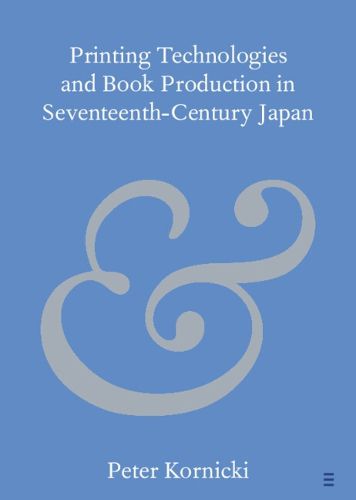Readings Newsletter
Become a Readings Member to make your shopping experience even easier.
Sign in or sign up for free!
You’re not far away from qualifying for FREE standard shipping within Australia
You’ve qualified for FREE standard shipping within Australia
The cart is loading…






This Element first sets the history of printing in Japan in its East Asian context, showing how developments in China, Korea and elsewhere had an impact upon Japan. It then undertakes a re-examination of printing in seventeenth-century Japan and in particular explores the reasons why Japanese printers abandoned typography less than fifty years after it was introduced. This is a question that has often been posed but never satisfactorily answered, but this Element takes a new approach, focusing on two popular medical texts that were first printed typographically and then xylographically. The argument presented here is that the glosses relied upon by Japanese readers could be much more easily be provided when printing xylographically: since from the early seventeenth century onwards printed books customarily included glosses for the convenience of readers, this was surely the reason for the abandonment of typography.
$9.00 standard shipping within Australia
FREE standard shipping within Australia for orders over $100.00
Express & International shipping calculated at checkout
This Element first sets the history of printing in Japan in its East Asian context, showing how developments in China, Korea and elsewhere had an impact upon Japan. It then undertakes a re-examination of printing in seventeenth-century Japan and in particular explores the reasons why Japanese printers abandoned typography less than fifty years after it was introduced. This is a question that has often been posed but never satisfactorily answered, but this Element takes a new approach, focusing on two popular medical texts that were first printed typographically and then xylographically. The argument presented here is that the glosses relied upon by Japanese readers could be much more easily be provided when printing xylographically: since from the early seventeenth century onwards printed books customarily included glosses for the convenience of readers, this was surely the reason for the abandonment of typography.